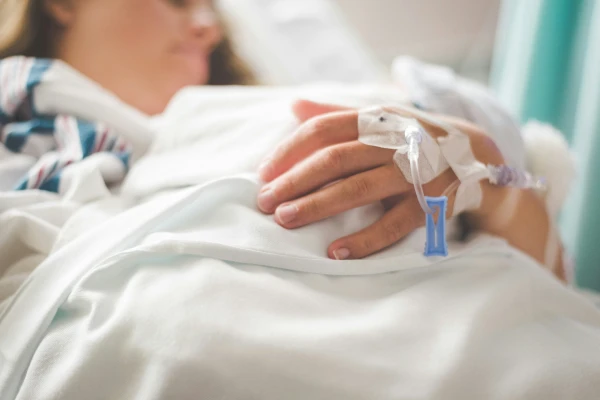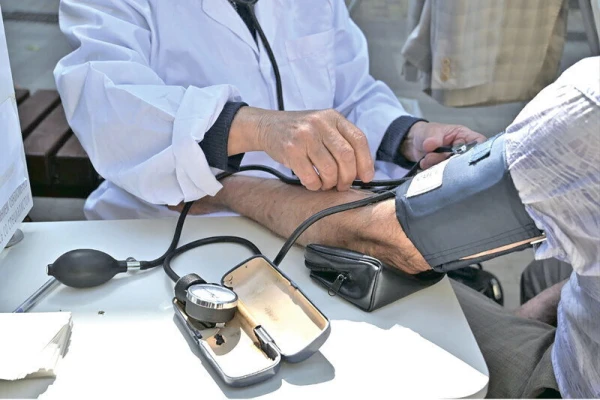
In small hospitals in the regions of Latvia, emergency departments must be maintained to ensure they are always accessible and functionally operational for people, stated Health Minister Hosam Abu Meri in an interview for the Latvian Television program "Morning Panorama," reports LETA.
At the same time, the positions of specialists that currently exist in these hospitals only "on paper" can be abolished to avoid misleading patients, according to the minister's words.
"Sometimes patients write on social media that they went to a specific hospital but were unable to receive the necessary service," acknowledged Abu Meri regarding the issue with medical positions that often exist only formally.
He noted that hospitals should not create situations where a patient is given the illusion of service availability that is actually impossible to obtain. However, it is crucial that emergency medical care is available in every hospital.
The minister emphasized that it is extremely important to maintain hospital accessibility for all residents of Latvia. He mentioned Balvi, Gulbene, and Aluksne as examples. When planning the hospital network, less obvious factors, such as military plans and proximity to military bases, must also be taken into account.
As previously reported, the Ministry of Health plans to submit an informational report on the proposed changes to the hospital network for public discussion in October. This was announced earlier at a meeting of the Health and Social Affairs Committee of the Association of Local Governments of Latvia by the director of the Health Department of the Ministry of Health, Sanita Janka.
She emphasized that the Ministry of Health does not plan to close any hospitals, and no decisions have been made regarding any of them at this time. The department is assessing what mandatory profiles each hospital can provide. The networks of emergency care and patient admission departments, as well as the profiles of inpatient services, are being reviewed. Requirements for inpatient medical services are planned to be established. Possible models of cooperation between hospitals and the funding model are also being reconsidered.
Janka reported that the most progress has been made in establishing requirements for maternity departments. The Ministry of Health has already held joint meetings with hospitals, during which agreements on requirements were reached. It is planned to establish two types of departments – for normal births and for premature births requiring perinatal care.
Speaking about possible models of cooperation between hospitals, Janka emphasized that they will be in the interest of patients. A patient who receives highly qualified care can continue recovery in a hospital closer to their place of residence.
She explained that the Ministry of Health is carefully analyzing both the human resources and technical equipment of hospitals, as well as data on patient flow. It is planned that the emergency medical team should deliver a patient to the hospital no later than within an hour.
Since last year, a pilot project of the Patient Delivery Plan has been implemented, the main goal of which is to deliver patients as close to their place of residence as possible, so that, for example, a patient from Limbazi does not have to be taken to Riga for an X-ray only to find out that they have a simple head injury, Janka explained.
The implementation of the project would reduce transportation distances and the time it takes for patients to reach medical institutions. Additionally, directing patients to first-level hospitals would relieve higher-level medical institutions.
However, as the practice of the pilot project showed, emergency teams face the issue that in some places the necessary examinations or specialists are absent. The highest number of refusals to accept patients has been recorded in lower-level hospitals. In 47.3% of cases, patients were referred to fourth-level hospitals, and in 31.9% – to fifth-level hospitals. There were also cases where patients were not accepted at the emergency department at all and were redirected to another hospital, Janka pointed out.
The pilot project showed that, on average, the emergency medical team delivers one patient to a first-level hospital once every five days.
Commenting on this project, Janka acknowledged that the idea was good, but in practice, it did not materialize as the Ministry of Health had planned. Unforeseen circumstances arose, particularly the increase in the number of so-called "self-goers" – patients who independently go to hospitals. In Riga, they often come in the evenings and at night, while in the regions, they come until 10 PM. Most often, these are patients in need of primary medical care, who create a burden on large university hospitals.
The results of the pilot project are one of the reasons why the Ministry of Health must assess where to maintain emergency departments and where to establish emergency medical points that will operate around the clock with on-duty doctors, medical personnel, and the ability to conduct examinations, X-rays, laboratory tests, ECGs, and ultrasounds.
According to the Ministry of Health's plans, an informational report will be submitted to the government for public discussion in October this year. In June next year, a review of inpatient service profiles and the establishment of requirements is planned. Hospitals will be given one year to implement the requirements. The requirements will come into effect in January 2027. In 2028, it is planned to evaluate and clarify the profiles of inpatient medical services. From January 2029, an assessment will be made, and if necessary, changes will be made to the hospital network.
Local government representatives expressed concern about how patients who will be taken to more distant hospitals will be able to get back home, as the availability of public transport is not taken into account in these plans. The Ministry of Health expressed hope that local governments will be able to provide transportation for patients to return to their place of residence.
As previously reported, at the beginning of October, a plan from the Ministry of Health was presented at a meeting of the Saeima's Social and Labor Affairs Commission, which envisages the consolidation of hospitals of various profiles and levels into ecosystems.
Parliamentarians and industry specialists discussed the audit of inpatient medical care conducted by the State Audit Office, "Is Inpatient Medical Care Organized Effectively?"
The Ministry of Health also reported that the vision for health management involves creating hospital ecosystems.
The mental health ecosystem will include the National Center for Mental Health, Daugavpils Psychiatric Hospital, Gintermuiža Hospital, the Coastal Hospital, and the Strenči Psychiatric Hospital.
In the children's health system, it is planned to consolidate the Children's Clinical University Hospital, adolescent resource centers, and the Ainazi Children's Psychiatric Hospital.
The ecosystem of the Pauls Stradiņš Clinical University Hospital will also include trauma profiles, chronic patient care, and the repurposed Riga 2nd Hospital. This ecosystem will also include hospitals from Liepāja, Ventspils, and Jelgava, as well as third-level hospitals.
The ecosystem of the Riga Eastern Clinical University Hospital will also encompass maternity services, traumatology, and home care. It will involve hospitals from Daugavpils, Rēzekne, Jēkabpils, Vidzeme, and third-level hospitals.
The specialization of second and first-level hospitals will focus on operating trauma points, day hospitals, and palliative care.
The Ministry of Health's plan stipulates that patients should receive emergency, palliative, and outpatient care as close to their place of residence as possible. Therapeutic and care services should be available nearby, while specialized care should be received in more distant medical institutions.
Specific changes to the hospital network and the list of services were not announced at the Ministry of Health meeting.
At the same time, the deputies were informed that the Ministry of Health plans to review the network of emergency and patient admission departments, revise the profiles of inpatient medical care, establish requirements, and reconsider the funding model.
State Auditor Edgars Korčagins noted at the meeting that the State Audit Office does not specify where exactly services should be provided – that is decided by politicians. At the same time, he called for a review of the hospital network so that in five years it does not turn out again that services are available only "on paper" and in beautiful concepts.













